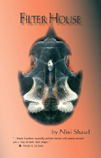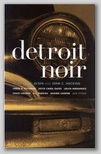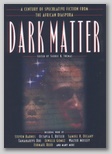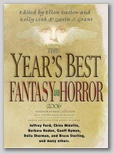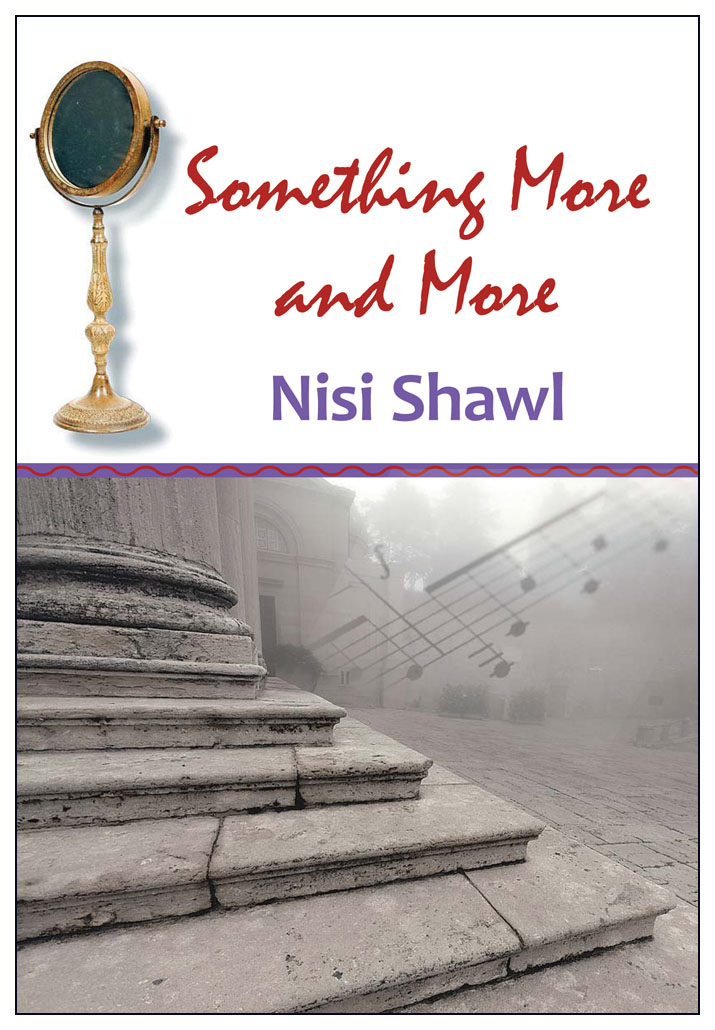Nisi Shawl
A Crash Course in the History of Black Science FictionAs I write this it’s February--Black History Month in the U.S. and Canada--for a few more days. But just as black history didn’t just take place in the February of any given year, it takes more than a mere month to encompass it. Even if the focus is narrowed to the black history of science fiction. In 1909 Harvard’s president, Charles W. Eliot, issued a 51-volume anthology he claimed could provide its owners with a complete liberal arts education. In the same vein, I’ve pulled together an annotated list of 40 black science fiction works that are important to your understanding of its history. You’ve got the rest of 2016 to read them. That’s doable, isn’t it? Tackle them one per week....Sure, some of the older titles are going to be full of archaic and unfamiliar turns of phrase; some of the anthologies are thick, and a couple of the novels I recommend are fairly long. But a few of my suggestions are short stories, a few are children’s books, and all of them are things I’ve enjoyed. And if you start now, you should have at least one week you can use to catch up if you fall behind, or to explore any titles find yourself distracted by as you make your way through this crash course. Plus, you may well have read some items on my list beforehand. Just one caveat before you start ordering and downloading and diving into things: some of these works could be construed as fantasy rather than science fiction. The distinction between these two imaginative genres is often blurred, and it’s especially hard to make out their boundaries when exploring the writing of African-descended authors. Why? Because access to the scientific knowledge from which SF often derives has been denied to people of the African diaspora for much of history. And the classification of what is and is not scientific knowledge hasn’t been under our control--it’s frequently a matter of dispute. Also, it’s sometimes difficult to understand the history of black science fiction without reference to the history of black fantasy. Keeping in mind how inextricably the two genres are interwoven, I include works of fantasy in this history of black science fiction crash course reading list, though I’m careful to note their presence with a parenthetical F at the end of each entry, thusly: (F). We begin at the beginning. 1859 Martin R. Delany: Blake, or the Huts of America -- This is often cited as the first African American science fiction novel, though the author lived in England at the time it was published. It’s about a slave revolt, with hints at the Utopia that may follow. 1887 Charles Chesnutt: “The Goophered Grapevine” This was the author’s first short story, and the first story by a black writer to appear in the prestigious glossy magazine The Atlantic. Heavily laden with “eye dialect” (stylized and phoneticized depictions of nonstandard speech), it’s one of Chesnutt’s popular “Uncle Julius” tales, which were collected in 1899’s The Conjure Woman. (F) 1903 Pauline Hopkins: Of One Blood -- A rousing adventure along the lines of H. Rider Haggard’s She and King Solomon’s Mines, Hopkins’s serialized lost race narrative takes readers from a sleety Boston campus to a Libyan desert’s “rosary of oases.” Medical student Reuel Briggs discovers he’s the descendant of divine African kings, destined to rule the faithful inhabitants of “Hidden City” with the aid of a priestly hypnotist. (F) 1920 W.E.B. Du Bois: “The Comet” -- In the post-apocalyptic New York created by the devastating toxic gases a crashing comet unleashes, a black man has a close encounter with the only other survivor, a wealthy white woman. This unabashedly science fictional scenario is deftly handled by, yes, that Du Bois, the influential black thinker best known for his philosophic analyses of U.S. race relations. It was reprinted in Dark Matter 1, which I cover later in this article. (As you can see, I have no 1930s or 1940s titles to recommend. All I can offer is the fact noted by author and librarian Jess Nevins that the race of the many anonymous authors published in the pulps in those years is unknown. Onward.) 1954 Amos Tutuola: My Life in the Bush of Ghosts -- Like his first novel, The Palm Wine Drinkard, this collection of related stories deals with the mythic realm of Yoruba-based cosmologies. Unlike that book its young protagonist enters this realm unwillingly. The stories appear non-sequentially, emphasizing the disjointed outlook resulting from his strange experiences. (F) 1962 Samuel R. Delany: The Jewels of Aptor -- Completed when Delany was a teenager and published when he was 20, this first novel tells in poetic language of a quest through post-atomic lands filled with mutants and surprising cultural survivals. 1969 Sam Greenlee: The Spook Who Sat by the Door -- A wishful tale of overthrowing the status quo, this book, sometimes classified as a thriller or spy novel, pits black ex-CIA agent Dan Freeman against a corrupt white political system. By arming and educating Chicago gangs Freeman brings about a violent revolution. (How are you doing? If you’re reading these titles in order you’ve absorbed over 100 years of black science fiction at this point. Only a few more decades to go. But I won’t lie to you; you’re not even halfway through all the wonderfulness. Much more lies ahead.) 1970 Lorraine Hansberry: Les Blancs -- A delirious air of surrealism pervades this play examining Europe’s colonialist control of Africa and Africans. Though she’s best known for her 1959 drama A Raisin in the Sun, Hansberry considered Les Blancs her most important work. 1972 Ishmael Reed: Mumbo Jumbo -- The notoriously chauvinistic literary critic Harold Bloom considers this one of the world’s 500 most important books. It was certainly an important influence on me and a myriad of other imaginative blacks when it appeared. A quasi-historical, illustrated spree through clashes of the heroic proponents of jazz and voodoo with the oppressive fictional Wallflower Order, Mumbo Jumbo was Reed’s third novel. It was preceded by “the first American Hoo-Doo Western,” Yellow Back Radio Broke-Down, and the bitingly satiric The Freelance Pallbearers. (F) 1975 Samuel R. Delany: Dhalgren -- When you read Dhalgren you’re automatically enrolled in a secret club made up of a special kind of intellectual. A widespread cult has grown up around it--fittingly, since it’s a strange story strangely told: the last line, for instance, famously ends with the words that begin the first. Set against the backdrop of the enigmatic ruins of a post-apocalyptic city, the exploits of the Kid illuminate both more and less than we want to see of them. 1977 Toni Morrison: Song of Solomon -- Building on persistent legends of blacks escaping enslavement by flying back to Africa, Morrison relates the personal history of the descendant of one of those left behind. Ten years later, in Beloved, Morrison again invoked the supernatural when recounting the lasting effects of American chattel slavery on blacks. (F) 1979 Octavia E. Butler: Kindred -- Not her first novel, Kindred is Butler’s best known. It was itself inspired by Black History Month; she wrote it in response to disparaging remarks about their enslaved ancestors made by black students ignorant of the extent of those ancestors’ oppression. A modern black woman is drawn involuntarily back to the antebellum South, ensuring that a white supremacist lives to sire her grandmother. (F) 1981 Charles Saunders: Imaro -- This book is claimed by some critics to be the first example of fantasy’s “sword-and-soul” subgenre (sword-and-sorcery with a majority of African-descended characters). Rather than a novel, it’s a collection of six short stories centered on Imaro, who was a “black Tarzan” according to the cover copy. Given the wizards and demons haunting the magical world of Nyumbani, site of Imaro’s struggles, Robert E. Howard’s Conan the Barbarian is probably a better comparison. (F) 1984 Octavia E. Butler: “Bloodchild” -- What Butler referred to as her “pregnant man story” established new levels of squirm-worthiness in science fiction while simultaneously proving that this accomplished novelist could also easily handle the limitations of shorter forms. It won both the Hugo and the Nebula, science fiction’s two most highly sought awards. A colony of humans stranded on an alien planet becomes the preferred reproductive medium for the sentient, cultured, yet quite savage Tlic. 1986 Virginia Hamilton: The Magical Adventures of Pretty Pearl -- This children’s fantasy of West African divinities becoming involved in blacks’ struggle for freedom conveys the sorrow and pain of enslavement without omitting humor and hope. A great introduction to black history’s depth and breadth. (F) 1988 Gloria Naylor: Mama Day -- I love this book. It’s an ambitiously structured narrative that combines romance with folklore and delves deep into the apparent dichotomy between magic and common sense. Generations of women fall into and out of conflict with one another and their definitions of emancipation on the gloriously real-feeling Georgia sea island of Willow Springs. (F) 1990 Charles R. Johnson: Middle Passage -- Though it’s usually considered a non-fantastical and purely historical novel, much of the action of Middle Passage centers on a captured West African god and the healing visions he bestows on the novel’s hero, freedman Rutherford Calhoun, when he stows away on the slave ship Republic. (F) 1992 Derrick Bell: “The Space Traders” -- Plausibly though controversially, this short story depicts the advent of aliens willing to trade their endless bounty for the imprisonment and delivery to them of all blacks in the U.S. 1998 Nalo Hopkinson: Brown Girl in the Ring -- Winner of publisher Warner Aspect’s First Novel Contest, this near-future tale of an unwilling medium surviving in an abandoned urban core established Hopkinson as a major force in the genre. Organ harvesting, teen motherhood, murder, and other topics vie for attention as the fast-paced plot hurls readers through Canada’s vividly described Afro-Caribbean subculture. 1998 Sandra Jackson-Opoku: The River Where Blood Is Born -- This book was lauded by Mama Day’s author Gloria Naylor as a “stunning feat.” Spanning continents and centuries, it’s an intergenerational saga of inherited dreams and the legacy of defiance bequeathed on modern blacks by those who fought oppression before us. (F) 1999 Colson Whitehead: The Intuitionist -- Embraced immediately by such non-genre notables as John Updike and Esquire magazine, Whitehead’s debut novel describes a city like and unlike New York, where an elevator inspector tries to determine why her nonrational methods have failed her. It’s self-admittedly a work of speculative fiction, and Whitehead’s 2011 zombie novel Zone One sealed his reputation as someone who willingly takes on SF’s concerns whenever he feels they’re what he needs to write about. 2000 Nalo Hopkinson: Midnight Robber -- This may be my favorite of Hopkinson’s many amazing novels. Taking us first to the near-Utopian planet of Toussaint, a world settled by a diverse Caribbean population, then to its transdimensional prison colony of New Half-Way Tree, Hopkinson tells the moving tale of innocent bystander Tan-Tan’s adaptation to strange new living conditions. Dialogue and narration highlight Island speech patterns--not the first time an author has done this, but an extremely fine example of using nonstandard English to introduce readers to black culture. 2000 Sheree Renée Thomas: Dark Matter 1 -- Here we have a groundbreaking anthology covering historic expressions of the Afro-diasporic fantastic such as the aforementioned Du Bois story “The Comet,” well-known SF authors such as Octavia E. Butler, and then-newly emergent ones such as Kiini Ibura Salaam and yours truly. The two Dark Matter anthologies provide an even crashier-course in the history of black SF for those looking for a drastically condensed overview. Plus, this first volume also includes Samuel R. Delany’s essential essay “Racism in Science Fiction,” the basis for the founding of the Carl Brandon Society and other milestones of SF activism. 2001 Walter Mosley: Futureland -- For years known for his superb crime novels such as Devil in a Blue Dress, Mosley published these nine loosely connected short stories as a warning about how technology can be used to rob us of our hard-won civil rights, making his “imminent future” both a social and a scientific extrapolation. 2003 Steven Barnes: Zulu Heart -- This is the second of Barnes’s alternate histories. Both are set in a world in which Europe’s population was so devastated by the Black Plague that it colonization of the Western Hemisphere was left to China and North Africa. I picked its sequel over Lion’s Blood because it includes such thrilling episodes as a reprise of the fight for the Alamo and the deployment (by a disabled teen-aged girl!) of a newly-invented, hacked together submarine. 2003 Tananarive Due: The Good House -- This tale of a haunted house deliciously and simultaneously showcases Due’s power to invoke blinding terror, her respect for religious traditions outside the mainstream, and her intimate knowledge of the violence directed toward young black men. It’s as timely now, unfortunately, as it was at its publication. (F) 2004 Minister Faust: Coyote Kings of the Space-Age Bachelor Pad -- Faust, later the winner of the Carl Brandon Society’s Kindred Award, kicked off his career as a novelist with this account of a grail quest as pursued by two teenaged Ethiopian-Canadian SF fans. Game player-like character cards spell out the strengths and weaknesses of these heroes and their drug-dealing antagonists. (F) 2005 Octavia E. Butler: Fledgling -- This was Octavia’s last book. Heroine Shori is a 53-year-old top predator-type of vampire with the appearance of a twelve-year-old black girl. Octavia actually thought of this biologically rigorous novel, starkly realistic in its portrayal of the mechanics of death and feeding on humans, as a fun, lighthearted romp. Shori’s battle against the attacks of her white relatives cries out for the sequels Butler died before she could write. 2006 Andrea Hairston: Mindscape -- Winner of the Carl Brandon Society’s Parallax Award, Hairston’s first foray into fiction (she’s a seated professor of theater and Afro-American studies at Smith College and has written plays and academic papers for decades) was also a finalist for the Philip K. Dick and James Tiptree, Jr. awards. She won the latter for her second novel, 2011’s Redwood and Wildfire, but this is the work that marked her as an SF author to watch. 2008 Nisi Shawl: Filter House -- At first I thought I shouldn’t include a collection of my own short stories on this list. But Filter House actually is of historical significance: it’s the first book by an African American to win the James Tiptree, Jr. award. And I believe you’ll like it. 2010 Nnedi Okorafor: Who Fears Death -- A novel that haunts your dreams for weeks after you’ve read it is indisputably remarkable. Who Fears Death won both the World Fantasy and Parallax awards. It captivated an international audience with its grim yet elegant account of a child of rape born into a post-apocalyptic Africa and seeking to overcome the sorcerer who sired her. 2010 Karen Lord: Redemption in Indigo -- Telling a Senegalese folktale as science fiction, Lord’s debut novel stretched the familiar parameters of these related genres to the breaking point and beyond. This story of a runaway housewife who’s given the power to manipulate time and space won the prestigious Frank Collymore Award before it was even published; after publication it garnered the Parallax, the William L. Crawford, the Mythopoeic, and the Kitschies’ Golden Tentacle awards. 2010 N.K. Jemisin: The Hundred Thousand Kingdoms -- The publication of best-selling author Jemisin’s debut novel almost instantly created an army of adoring fans. First in an epic fantasy series with a distinctly “romance” feel, The Hundred Thousand Kingdoms successfully proclaimed the right of characters of color to inhabit the imaginary worlds authors love to create. (F) 2011 Mat Johnson: Pym -- Piercingly witty in its depiction of African-descended people’s foibles (“You know, I got Indian in me.”), Pym is a metafictional account of an out-of-work academic’s mission to the South Pole, guided by what he believes to be the diary of a black follower of Arthur Gordon Pym--the narrator of Edgar Allan Poe’s sole novel. (F) 2011 Nnedi Okorafor: Akata Witch -- A fantasy for children along the lines of Rowling’s Harry Potter series, Akata Witch supposes that magically endowed children spring from the so-called “Dark” continent of Africa as frequently as they do from the British Isles. Twelve-year-old Sunny, an albino American black living in Nigeria, attends a wizard’s academy with similarly powerful children who soon must defeat a grown sorcerer threatening the very existence of life. (F) 2011 Milton Davis: Changa’s Safari -- In the tradition of Saunders’s and Imaro (recommended above), Davis spins a sword-and-soul novel out of related short stories. They center on a crew of adventurers which includes a veiled Tuareg who has taken a vow of silence, a headstrong sorceress, and the hero himself, a disinherited prince of the Kongo, bent on avenging his slain family. Changa’s Safari is the first of a series, and a good example of the emergence of self- and small press publishing as a black SF force to be reckoned with. 2012 Tobias Buckell: Arctic Rising -- This fast-paced near-future thriller pits airship pilot Anika Duncan against corporate interests in a battle for the fate of an ecologically devastated Earth. Grenadian born Buckell’s entry into the burgeoning sub-genre of “cli-fi” (climate change focused SF) was followed in 2014 by the equally intense sequel Hurricane Fever. 2012 Balogun Ojetade: Moses: The Chronicles of Harriet Tubman -- What better inspiration for an action hero than the Underground Railroad conductor who led so many to freedom? In this book and its sequels, Ojetade re-imagines the woman called “Moses” as a psychic soldier as well as the spy we now know Tubman to be. Steampunk inventions and hell-spawned horrors provide an intriguing setting for her larger-than-life struggles. (F) 2013 Alaya Dawn Johnson: The Summer Prince -- Johnson’s debut young adult novel, this account of an atypical love triangle set in a far-future Brazil brings to life a multi-tiered society ruled by a matriarchy armed with nanotech. It won the Andre Norton Award, which, like Johnson’s two 2015 Nebulas (for Love Is the Drug and “A Guide to the Fruits of Hawai’i”), is a fitting tribute to the author’s involving characters and the intensely believable predicaments they face. 2014 Jenn Brissett: Elysium -- Though at 197 pages it’s one of the shorter novels published this century, Elysium’s vision is ambitious and the fulfillment of that ambition beautifully accomplished. Characters with shifting genders, literally ethereal computer architecture, and a spiraling narrative structure combine to make this an unforgettable, pleasure-filled encounter with a true myth. 2015 Kai Ashante Wilson: “The Devil in America” -- I have a standing offer I make to anyone who reads this novelette: if you need to talk about it, call me. That goes for you, too. Email me privately and I’ll send you my phone number. “The Devil in America” is a brilliant, devastating retelling of the oft-repeated destruction of a black town or neighborhood by mobs of angry whites. Rosewood, Florida; Tulsa, Oklahoma; Wilmington, North Carolina--the hideousness shared by all these “race riots” instigated by white supremacists is stunningly imparted through Wilson’s gorgeous and moving prose. (F) 2015 Walidah Imarisha and adrienne maree brown: Octavia’s Brood -- In putting together this anthology, brown and Imarisha searched for what Octavia E. Butler called “change-the-world fiction.” From Sheree Renée Thomas’s thought-provoking preface through Ethiopian American hiphop poet Gabriel Teodros’s time-travel story “Lalibela;” to Tananarive Due’s reflection on Octavia E. Butler, “The Only Lasting Truth;” this is a richly rewarding book, extrapolating what will come from what has been, bravely facing the future. So that’s my list. It’s long yet incomplete. It’s missing some great books, books I’ve read that you’ll want to read, too. Someday. But if you make it through this crash course in the history of black science fiction you’ll at least have some idea of what it is, where it’s coming from. Which will help you figure out where it’s going.
|
||
Copyright © 2018 by Nisi Shawl |
